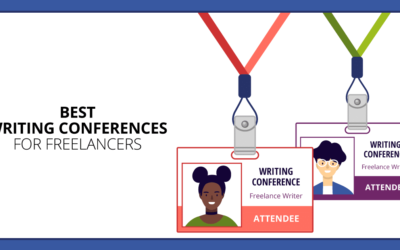
Rules were meant to be broken.
Not all the grammar rules you learned in school will help you catch an editor’s attention, write smart marketing copy, or move up and earn more as a freelancer.
And that was hard for me to accept.
I’ve been an English teacher for more than a decade. But to land freelance writing assignments, I had to ignore some of the very grammar rules I taught in school.
Wondering how to improve your writing and send Boring and Stuffy to detention?
I really started to take notice when I was grading formal research papers and thinking about a blog assignment for a client at the same time.
Two totally different worlds.
I’m sure your English teacher was a nice person. But there are some grammar rules you should break as a freelance writer:
Forget about half-page paragraphs
Remember being taught a proper paragraph is five to seven sentences long? You know, the whole Roman-numeral-outline thing, and supporting details.
Ditch that idea. Like it or not, things like the Internet and text messaging have eroded the typical attention span of most readers. You probably have 30 seconds or less to impress an editor or engage a reader, and keep them interested.
Serve up monster-sized paragraphs, and your readers are likely going to turn the page or click away.
Break this grammar rule: Write shorter paragraphs. Even a single sentence can stand alone as a paragraph. Most magazines, websites, and marketing copy all follow the rule of shorter paragraphs. And it works a lot better at holding your reader’s attention than half-page paragraphs.
Take your formal writing elsewhere
Your English teacher might have raised you on a no-contraction diet. Or maybe you were taught that casual, conversational writing was one of the seven deadly sins.
If you followed this grammar rule, you probably aced English class. But if you didn’t, your English teacher probably told you that you weren’t taking your writing seriously and your grade suffered.
When I realized I could flip the switch on formal writing, and earn money from freelance writing, I was kind of blown away. Research papers and academic writing typically doesn’t pay well, if at all.
But a magazine assignment, blog post, or marketing copy that pays $1 a word? That’s worth changing your writing style.
Break this grammar rule: Study the markets you want to write for. Then match their style. In most cases, you’re going to find that magazines, websites, and businesses use casual, conversational language to engage their audience.
Fragments. Are. Not. Your. Enemy.
On behalf of English teachers everywhere, I’m sorry for subjecting you to things like grammar worksheets, sentence diagrams, and monotonous verb conjugation exercises.
It’s the kind of in-class experience that inspired the teacher role played by Ben Stein in Ferris Bueller’s Day Off. “Anyone…anyone? Bueller…Bueller?”
Fragments are not your enemy. If your sentence doesn’t have a textbook-style subject, verb and predicate, you’re tapping into the way people talk and think. And probably writing in a more engaging way.
Break this grammar rule: Don’t be afraid to use fragments. It’s a writing convention too many English teachers abhor. But fragments can help display your style, add drama, and build tension in a news story, feature article, blog post, and even marketing copy. The next time you pick up a novel, read a magazine, or see an advertising message, notice how often fragments are used effectively.
Say goodbye to academic writing
The Associated Press Stylebook and I had a rocky start to our relationship. When I started writing for Arizona State University’s newspaper, The State Press, I realized MLA (Modern Language Association) style used in academic writing was problematic.
All of a sudden, my periods had to be shortened from two spaces to one. Use of commas changed. Dates, times, and abbreviations were different.
And there were a lot of other rules I had to learn that never came up in English class or were simply considered taboo in academic writing. I’m sure my newspaper editors dreaded every academic-style news story I submitted.
Break this grammar rule: If you haven’t already, get to know AP Style. Most magazines, newspapers, and public relations agencies use AP Style, or their own home-grown version. And give up MLA style. It’s really only useful for the publish-or-perish university professor, not freelance writers.
Grammar rules for freelancers
I’m still living a double life as an English teacher and a freelance writer. Fortunately, I’ve realized that there’s a big difference between academic writing, and writing for clients. Getting paid is one of them. Break the grammar rules you learned in English class, and you’ll be on your way to moving up and earning more as a freelance writer.
Have questions about grammar rules for freelancers? Let’s discuss on Facebook.
Melissa Shaffer is an English teacher and freelance writer. When she’s not teaching class or on a writing deadline, she’s running, biking, and swimming to prepare for her next triathlon.










